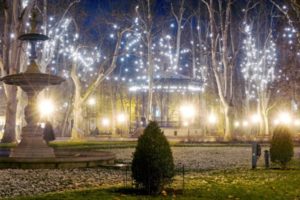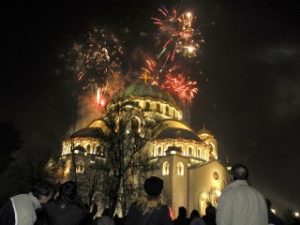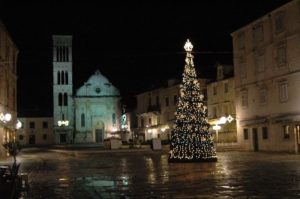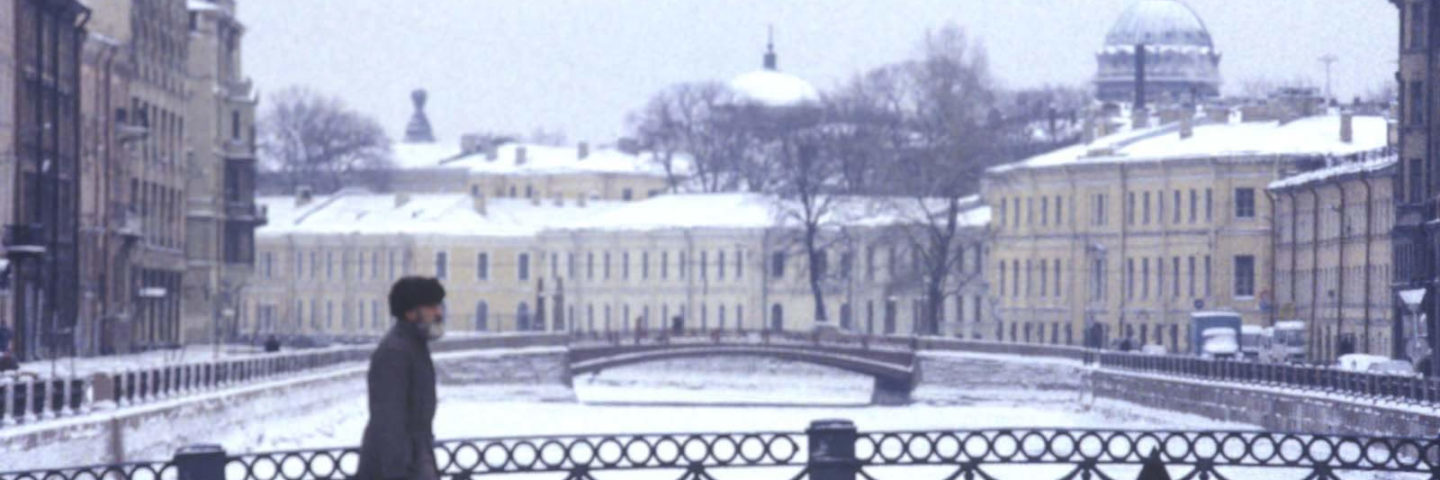[twitter style=”horizontal” float=”left”][fbshare type=”button” width=”100″]

Christmas wine opportunities come but once a year – or do they?
I’m halfway through an Eastern European, pre-Christmas odyssey and I am reminded that to me some places are more Christmassy than others. Eastern Europe is up there on the Christmas-ometer for me. Crunchy, frosty landscapes, idyllised visions of horse-drawn sleigh rides all wrapped up in an abundant layering of rugs to keep you warm listening to the tinkling of bells and the thunder of horses’ hooves. My journey has been more bus, train, plane and taxi but when has reality ever come into play with a vision? So I packed lots of layers and my snow boots as I headed off for a whistle-stop tour of Budapest, St Petersburg, Moscow, Belgrade and Zagreb.
I spent ten years in Australia making wine and loved it – but not the hot Christmases. No amount of cute Santas in surfing shorts or the 12 days of Christmas being populated with koalas and duck-billed platypuses could compensate for the lack of cold. I once got invited to a Christmas Day lunch that consisted of a cold buffet and I nearly cried with homesickness missing the crispy potatoes roasted in goose fat, Brussels sprouts and whatever particular bird was upon the table that year. Call me ungrateful but I wanted MY Christmas diner. Although, trooper that I am I always rallied with the prospect of Shaw and Smith, Adelaide Hills Shiraz or Grosset, Polish Hill, Clare Valley Riesling – some of Australia’s finest. It could hold you in good stead for that Boxing Day cold spread maybe?
So I had a chat with my friends dotted around Eastern Europe and thought I’d take a look at a very personal view of what constitutes their Christmas diner in their particular city and what they drink with it – in purely chronological order and acknowledging that this is not a definitive history of the Christmas festivals but a reflection of how my friends celebrate.
This may seem a list of ‘The Tale of Two Christmases’ so try not to get too jealous. The Hungarians have their first Christmas on the 6th December, Saint Nicholas’ Day. It is he and his ‘angel’ helper that brings all the presents. Then again on Christmas Eve the children are sent out to visit the neighbourhood or relatives while the parents decorate the tree with gingerbread and wrap the presents. A bell is rung to signify that Baby Jesus has delivered the presents. You’ll not find a decorated Christmas tree before the 24th December. The Christmas Eve meal is usually Bajai, a fish soup of Carp with noodles originating from the town Baja by the river of Danube – wonderful with Rioja Blanco A&A.

In Russia, you have to wait till January 7th to celebrate Christmas, since the Orthodox Church decided not to change from the Julian calendar to the Gregorian. So the 25th December is, in fact the 7th of January. According to the church it’s important to prepare for the birth of Christ by fasting for 40 days. So no office parties and endless Christmas lunches for them.
To break this Nativity fast you wait for the first star to appear on Christmas Eve and the meal should be bereft of meat, cheese and eggs. So fish takes centre stage in the form of herring, carp or pike and poppy seeds are widely used because they symbolise abundance and prosperity. Mushrooms also make an important appearance on the table – fresh, dried or pickled.

Twelve meatless dishes are set out to represent the 12 apostles. The tradition of this supper can actually be traced back to pre-Christian times when it signified a remembrance of the souls of deceased ancestors and the very brave do still take a dip in the nearest river or pond to cleanse the soul and the body. Softie cowards like me would splash a bit of cold water on their faces!
So think of the humble herring (salted not pickled) with a creamy Chardonnay such as the Hen and Chicken Chardonnay from Pemberton. Add a bit of Borscht with the herring for an earthy Spanish red like the Robert Parker winner Borsao Seleccion Tinto. Or the festive baked mushrooms with the Tabali Reserva Especial Pinot Noir.
As a predominantly Orthadox country, Christmas in Belgrade is also celebrated on 6th January and there are many similarities to the Russian Christmas with the Nativity fast ending on Christmas Eve. Many families in these two countries now often choose to celebrate Christmas twice – on both Gregorian and Julian dates.

In Belgrade, the obligatory festive table decoration is the flour sieve with a wooden lid into which are placed red apples to indicate the rosy cheeks of good health for the coming year. Then wheat grains, grains of corn, prunes and walnuts are added to symbolise well-being and good luck for the family. To finish the table the Christmas candle is lit and a badnjak or Yule log, traditionally made from an oak tree branch with dried leaves, is placed centre-stage. Even in large cities like Belgrade you can buy straw a few days before Christmas Eve to place under the table to symbolise the stable where Christ was born.
The patriarch is often in charge of preparing the fish of the Nativity fast. Maybe smoked trout or “Drunken Carp” stuffed with rice, vegetables and spices and then roasted in the oven while abundantly bathed in white wine. A classy bordeaux white like the Chateau Lestrilles-Capmartin would be wonderful with this. One of the many vegetarian dishes for the fast is prebranac – haricot beans baked in a clay pot in paprika and onion sauce from the oven. Indeed, the Eastern European Christmas Eve feast is a vegetarian’s delight with pickled salad (pepper, cabbage, cauliflower, cucumbers, beetroot) or a beloluchana salad of roasted hot chili peppers with garlic and vinegar. This spicy theme with a vinegar backnote is a tricky combination but the intense Alianca Bairrada Reseva Tinto would counter it all very nicely. For a white go for the more robust `Terre del Sud` Verdeca Vigneti del Salento.
Some people choose not to have any sweetened elements to the feast in keeping with the solemnity of the occasion while others have an array including zhito the ceremonial dessert of cooked wheat grains with ground walnuts and raisins. The wheat grain is the symbol of the human life cycle so it is made to honour and keep the memory of the deceased ancestors of the family. Ideal with the Pedro Ximenez San Emilio Lustau.
Christmas shifts back to December in Croatia but the tradition of a meatless celebration of the Eve remains strong. As in the UK, the root of this is a religious one with many keeping it as a tradition and as a counter to the meaty excesses of the following day. In truth, this menu is actually from the Tomic family in Hvar where I have been making wine this year, so not strictly the frozen East of sleigh bells and snow.
Their family traditional dish on Christmas Eve is bakalar so it is Mediterranean in feel as it is the Croat version of brandade. I forget the last time I had brandade but I love it and the only thing I want with it is Fino Sherry. The Innocete Valdespino is a delicious example of that most delicious of wines.

And my menu this year?
As always it’s got to be smoked salmon on little bits of black rye bread served with fiery horseradish cream and a bottle of the delicate Ayala Brut Majeur to fend off thirst and starvation while we open the pressies.
Since this year I’ll be at my sister’s mother-in-law who is Greek Cypriot there will be dolomades, humus and tarama, which will need the amazing Wild ferment Assyrtiko to compliment them (yes it’s from Santorini and not from Cyprus, I know, but it is the most stunning of wines).
Then the goose with my sister’s best ever roast potatoes and a glass of Patrick Javillier Bourgogne Blanc Forgets or the Rully Domain Jean Baptiste Ponsot.
Why not try the Banyuls Domaine de la Rectorie instead of a Port with the Stilton (yes I am a cheese before dessert person – shoot me!)

The Christmas pud always goes well with a nutty, complex sherry like the Patina Gallina Dry Olorosso. Having a complex, dry sherry actually refreshes you after the marathon meal or if you are opting for a lighter fruit based desert then try the gorgeous Vajra Moscato d’Asti – so underrated an appellation.
So what of the Eastern European traditions will I adopt?

Well I love poppy seeds so I’ll make some little poppy seed and parmesan biscuits to nibble with the pre-lunch Champagne, hoping that their promise of prosperity may rub off on the assembled crowd. I think I will adopt the meatless feast on Christmas Eve with my love of bakalar/brandade re-ignited and the thought of all those fiery dips and bean stews which gives me an excuse to have a glass of fino alongside it – and Eastern European festive tapas table if you will.
But I’ll stop short of the cleansing dip in the ponds of Hampstead Heath to prepare me for the year ahead if you don’t mind.
But there is one tradition that is often embraced – that of setting an extra place at the table for a drifter, lost soul or a deceased loved one. Maybe we can’t break that British reserve and invite all and sundry into our home for that spare place at the table but maybe take a look at this link to embrace the spirit of the gesture.
Crisis at Christmas
But whatever your menu or wine choice, Christmas is about gathering with family and friends and remembering how lucky we are to have them. And if you had such a great day you could always pop on a plane to St Petersburg, Moscow or Belgrade where you can do it all over again on January the 7th.
[twitter style=”horizontal” float=”left”][fbshare type=”button” width=”100″]

